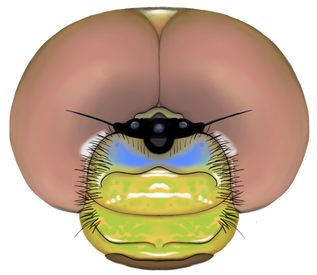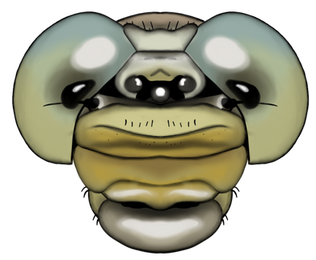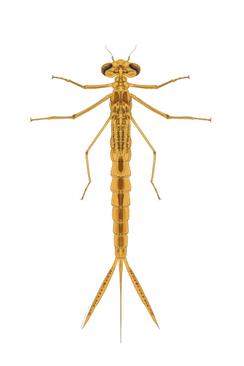What is the difference between: Dragonflies and Damselflies?
- amandawhispell

- Jul 20, 2021
- 5 min read
Updated: Sep 28, 2021
Dragonflies and Damselflies: What is the difference?
Dragonflies and damselflies both belong to the same order – Odonata. Dragonflies belong to the suborder Anisoptera and damselflies Zygoptera.
There are a lot of similarities between the two groups:
Both lay their eggs in aquatic environments - in ponds, rivers, streams, the spray of a waterfall, ephemeral pools, etc. There are a few exceptions that lay them semi-terrestrially.
Both live underwater as nymphs (babies are called nymphs) and then emerge from the water and eclose (emerge) from their exuvia ("shell") with wings to reach their adult forms.
Nymphs of both can shoot out their labium ("‘bottom jaw") to capture prey.
Both are carnivorous as nymphs and as adults.
Males of some dragonfly and damselfly species are territorial.
Males of both have two sets of genitalia. (!!!!!)
... but there are also a lot of differences:
Nymph Differences
Damselfly nymphs breathe using structures called caudal gills (right) while dragonfly nymphs breathe through internal rectal gills.

Adult Differences
Dragonflies tend to lay their eggs directly in the water while damselflies usually lay theirs inside of vegetation (know as endophytic oviposition).
Many damselfly species will form large groups when laying eggs while dragonflies tend to do so as mating pairs or while solitary.

Those are just a few of the similarities and differences – there are a whole lot more.
Dragonflies and Damselflies General Anatomy
Head - located at the cephalic (front) end of the body and primarily contains sensory structures. Their head is also able to rotate quite freely, so that—along with their huge eyes—makes it hard to sneak up on a dragonfly or damselfly.
Ocelli - simple, non-image forming eyes. Many insects have these and when they do they usually have three. They are simple photoreceptors (photo = light, so light receptors). Allows them to know if something is overhead and perhaps about to try to eat them.
Eyes - Compound Eyes - compound eyes are exactly what they sound like - eyes that are created by the compounding of many individual structures called ommatidia. These eyes are image forming. Ommatidia function in a similar (albeit highly simplified) way to our own eyes - collecting light and sending the information to their brains. As they have so many ommatidia dragonflies and damselflies have excellent eye sight.
Mouth - they have mandibles for chewing and several other mouth parts—the labrum and hypopharynx along with the labium and maxilla, which both possess palps (think: mouth fingers)—that they use to manipulate their food. The big business is done by the chewing mandibles.
Antennae - sensory structures. They are small in dragonflies and damselflies as their vision is their primary sense.
Thorax - the middle part of the body. The wings and legs are attached to this part, so this is the part that controls movement of the body. There are also many muscles used for flying.
Wings - dragonflies and damselflies have what's known as direct flight - essentially meaning that they have more control over their wings. Because of this type of flight dragonflies and damselflies are excellent fliers, though dragons are better than damselflies in general.
Abdomen - The caudal (rear) end of the body - the part you might call "the butt". This part of the body contains the reproductive structures - both internal and external - as well as all of the digestive system (and the anus is here... so butt isn't too far off). This section is made of ten individual segments often written as S1 for the segment closest to the body all the way through S10 which is at the most caudal (rear) end. There are more systems but generally you can think of the abdomen as the reproductive / food processing part of the dragonfly / damselfly.

Wing Shape / Size
Dragonflies Front and hind wings differ in size and shape – the hind wings is larger and broader at the base than the front wings.

Damselflies Front and hind wings are equal in size and shape. Both wings are more narrow at the base.

Resting / Flying Behavior
Dragonflies typically rest with their wings outstretched The also tend to fly very quickly and you will not be able to see their wings because they move them so fast. When they perch though, you have an amazing opportunity to see those wings!

Damselflies Typically rest with their wings folded together above or over their abdomens (with exceptions - those in the family Lestidae - the spreadwings). They tend to fly more slowly and you can usually see their wings fluttering.

Body Shape / Size
Dragonflies
Generally have thicker, bulkier bodies and are larger than damselflies. Their thorax is wider than the abdomen.

Damselflies Are generally rather slender with long narrow bodies. The thorax and abdomen are usually, but not aways, similar in width.

Eye Position and Head / Face Shape
Dragonflies Eyes are very large and generally wrap around most of the head. In most the eyes actually touch or nearly touch in the middle. Overall the head shape will be rounded.
Damselflies Eyes are large but never touch each other – there is always a large gap. Overall head shape will be wide and short like a hammerhead shark.

Mating
Dragonflies and damselflies have very unique mating practices. Male dragonflies actually have two sets of genitalia - one that create the sperm and one that delivers it to the female. To be fair, this is essentially true for the males of most species, including insects, however those part (in humans the testes and penis) are usually right next to—and connected—to each other. In dragonflies and damselflies it's different - the sperm is created towards the caudal (rear) end of the abdomen in the primary genitalia while the aedeagus --the term used for the structure the transfers the sperm to the female (i.e. the penis)—is located towards the cephalic (front) end of the body. This mean that the males actually need to transfer the sperm from the primary to the secondary genitalia in order to transfer it to the female.

During mating male dragonflies and damselflies hold onto the female with their terminal appendages, which are the structure at the most caudal (most rear) end of their bodies. This position allows the female to curve her abdomen up so that her genitalia (located at the most caudal end of their bodies) can make contact with the male's secondary genitalia.
Dragonfly and damselfly males do not hold their females in the same location though.
Dragonflies
Males grasp the females on the back of their heads when mating.
Damselflies
Males grasp the females on the back of their necks (on the front part of thorax) when mating.
When the female curves her abdomen so that their genitalia are engaged (male's secondary with the female's only) they form a circle and the position is known as the "wheel position." When damselflies are in the wheel position (below) you will notice that they form a heart. ❤️

Nymph (aka Naiad) Body Form
Dragonflies
Nymphs are thicker and more substantial.
They do not have caudal gills.
Can move very quickly
Damselflies
Nymphs are smaller and more narrow.
They possess long gills (caudal gills) that emerge from the back of their abdomen.
CLICK HERE to see the associated, downloadable coloring activity for this topic.
















Comments